#astomoi pathfinder
Text
Grim Apostle (Spiritualist Archetype)
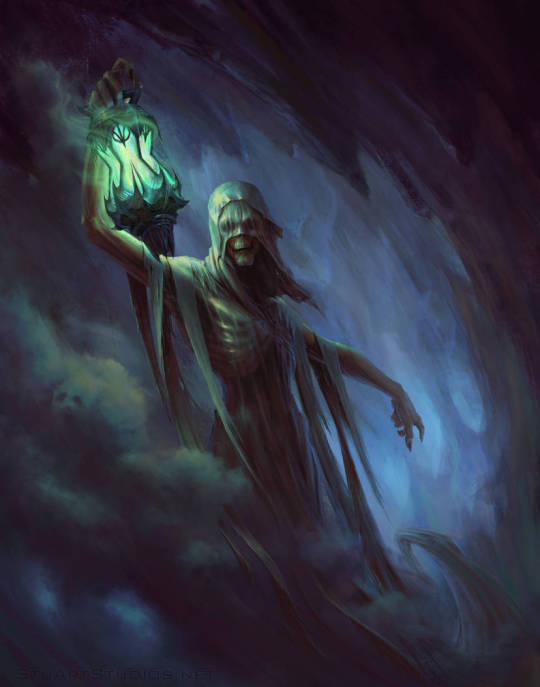
(art by StuHarrington on DeviantArt)
Ah, the spiritualist class, those shepherds of the dead, but very specifically not undead excepting in one case, because of reasons.
The spiritualist is very similar to the summoner, which is why the two were merged in 2E, but there are some stories that can only be told with the combination of ghostly being and the one they are bound to.
Truly, both the spiritualist and their phantom can come from all walks of life, leading to some odd couples and some interesting concepts… but one walk of life really doesn’t normally lend itself to cultivating such a bond: the nihilistic worshippers of daemons.
After all, daemons are distinguished from other fiends by their desire to devour souls, to snuff out those candles from the cosmos and leave it that much darker. A free-floating soul attached to a binder is surely too tempting a target for them.
Luckily, The Midwives of Death adventure, the final part of the Tyrant’s Grasp AP and the final First Edition product created, had a few final character options in it to round things off, including this option for such dark casters.
Rather than draw upon a wayward soul, these spiritualist bond themselves with a spiritual echo similar to those tapped into by mediums, but manifested in ectoplasmic form like a spiritualist. However, it is the nature of these vestiges that give one pause: for they are echoes of the Four Horsemen, the demigod rulers of daemonkind!
This hungry shadow that the mystic bonds with is not forced to reflect only one Horseman, but can shift each day to reflect a new one, giving them variable power sets depending on the day, again hearkening back to the similarities to mediums.
Needless to say, these mystics are every bit as monstrous as their dark patrons, and I can just imagine them feeding souls to their grim phantom as a sacrifice to their daemonic masters, believing, perhaps rightfully that those souls end up on the plates of the Horsemen themselves. They best take care though, for these phantoms prove just as cruel and hungry as the daemons they resemble, taking a bit of their “master” with them when banished.
Regardless, the result is a ghostly master/servant duo with a nasty set of powers and a sinister relationship.
As a reflection of the Four Horsemen, the phantoms of a grim apostle draw upon foci based on those entities, which they can change each day. However, their hunger and malevolence claws even at their own masters, and when the spirit is sent hurtling away from the material world by violence, they dig metaphysical claws into their master, risking taking them with them.
Which isn’t to say that they are entirely a liability. The spiritualist’s soul belongs to them, after all, and they will brook no other claimants, warding their host against death magic and magic that would displace or ensnare their soul, at least while cohabitating their body.
The four foci that these mystics and their phantoms have available are as follows. Firstly, there is Death, when they draw upon Charon. Such phantoms appear as shapeless, cowl-laden figures. They seem to embody death in general rather than Charon’s inevitability, but they gain some fancy abilities regardless. The apostle, for one, marks foes for death with their attacks, making the phantom’s attacks more potent against them. The phantom also develops an aura which impedes mundane and magical healing as well. Furthermore, they also instinctively learn techniques to quickly follow foes that try to escape their grasp. Finally, they learn a killing word to slay foes.
Second up is Famine, the purview of Trelmarixian, which gives the phantom a jackal-like visage. Their attacks are particularly dexterous, and take the form of ravenous bites. Their aura weakens foes with the pangs of starvation, they can unleash a horrific magical howl of anguish that weakens nearby foes, and they can even briefly swallow foes whole.
Apollyon’s domain is Pestilence, and the phantoms gain a ram skull cranium in this form. Their strikes weaken foes as if suffering illness, they surround themselves with phantasmal biting flies that devour foes, they can deliver disease with a touch, and finally, their strikes can make a foe suddenly very contagious, spreading their suffering to others.
Finally, we have War, the position held by Szuriel, and these phantoms resemble his form as an eyeless angel with black wings. These phantoms are strong, rather than agile, and their strikes aim for the most painful and damage-causing areas of the body. Their aura whips allies and foes alike into a frenzy of aggression, and their strikes heal themselves. Finally, Their fury becomes so great that any effect that would slow down or cause them to hesitate in their assault no longer have any effect.
With four powerful combat-focused foci to choose from, this archetype can be pretty good for tailoring your power set to the day, but you can also narrow your focus to one or two if you so choose. It really depends upon you. Just keep in mind the drawback that you can be dealt heavy damage with no way to resist it if your phantom goes down. With that in mind, perhaps building with some survivability in mind would be good.
Now, aside from villain campaigns, this archetype sits squarely in the “mostly for NPCs” category, but the fact they can vary up the powers and fighting strategy of their phantom per encounter means that this archetype works best for a recurring villain rather than a one-off foe. This can be a fun way to surprise the heroes that have prepared for the villain’s previous strategy.
Another interesting note: this archetype draws upon the current holders of the positions of the Horsemen. If you plan a game set in a different setting or time period, might those Horsemen be different? Could be worth homebrewing.
The party has been invited to the manor of a local noble for a gala, but when they arrive, they find the place curiously quiet. Once inside, they find the place overrun with monsters evoking rot and disease, including a whole colony of verduous oozes. It seems a cult of the Rotten One crashed the party before they arrived, led by their half-mad leader and their phantasmal advisor which looks suspiciously similar to depictions of the dark demigod.
After losing a beloved companion, the formerly ascetic astomoi Viius found that he could not return to his former life, taking on a more and more nihilistic worldview, until one day he was contacted by a shape in the dark, offering him the power to help end the world that lacked any such meaning.
The embodiment of War has an iron grip on the nation of Merkas, his devotees whipping the country up into a frenzy of jingoism and fascism, turning their blades upon neighbors for any reason at all, be it greed for resources, preemptive violence against imagined threats, and of course, bigotry against those unlike themselves. High in their rankings are speakers of War, who call upon translucent visions of their master, interpreting his will.
#pathfinder#archetype#spiritualist#grim apostle#verduous ooze#astomoi#Pathfinder 144 Midwives of Death
8 notes
·
View notes
Text

a commission for my friend of their pathfinder character, Kohl, an Astomoi !! i had a lot of fun drawing them !!
if you'd like to commission me too, you can read up on my commission info by clicking here! or by going to this link: https://bigfrog4231-commissions.carrd.co/
#macs doodles#pathfinder#ttrpg#pathfinder character#pathfinder oc#astomoi#astomoi character#astomoi oc#ttrpg character#ttrpg oc#ttrpg art#pathfinder art
3 notes
·
View notes
Note

Hello, I have this homebrew sheet here for a (hopefully) sort of balanced playable Serpentfolk Race. I know RP points aren't always fully trustworthy when it comes to determining actual balance so I wanted to ask someone more knowledgable when it comes to Pathfinder Homebrew.
I tried to liken it to more powerful player races like Kasathas, and Wyrwoods, while keeping it from being truly Monstrous in power.
(Just noticed this in the screenshot. It's worded weirdly but it's supposed to say that the Serpentfolk can use its Venom ability a number of times per day equal to its Con modifier.)
Thanks in advance for reading this wordy ask.
Hmmmmmmm
It's a powerful race, but not overwhelmingly so when compared to the likes of the planetouched... Couple of useful spell-likes that are probably needed... I, personally, think the SR is a bit much, but if PF's RP calculator only puts it at a 2, then I don't see it as any more wacky than an android's Nanite Surge or a tiefling's elemental resistances.
The only thing I'm potentially a little bit squibbly about is the 100ft of perfect telepathy. In the hands of an NPC, telepathy is fine... but in the hands of a clever, sneaky, and/or malicious player, telepathy can be scary. Off the top of my head, the only other race with telepathy that isn't restricted is the Astomoi, and it trades a lot for that particular power. Which is fair, considering it's a constant Tongues, a way to silently relay messages between teammates, and a way to torment foes from afar, all available from level 1. I would limit it; either by cutting the range in half, limiting it to communication only with creatures with which you share a language, or by somehow linking its power to character progression; it starts effectively worthless and grows in power until you reach level 8 or so, where it becomes the 100ft unrestricted version.
that's just my 2 cents!
12 notes
·
View notes
Photo
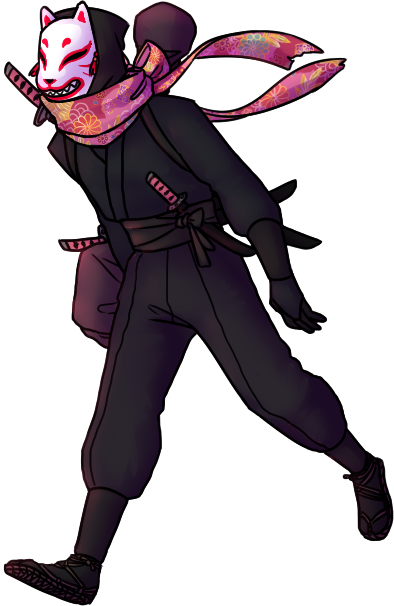
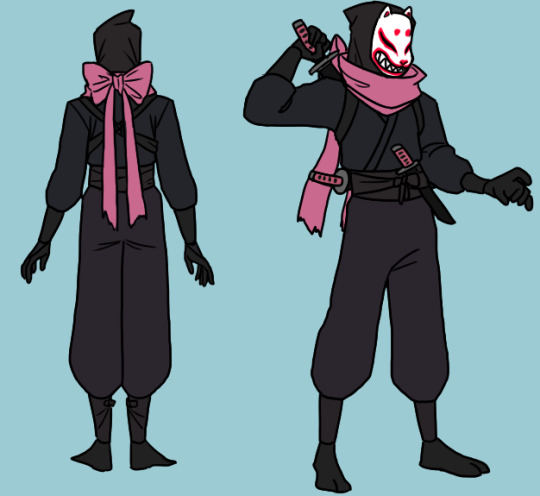
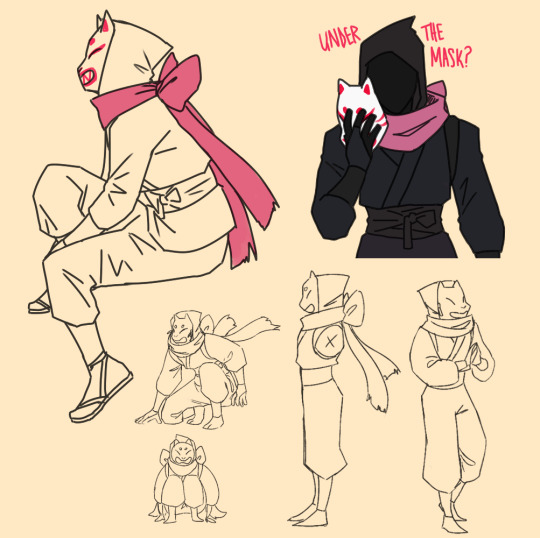
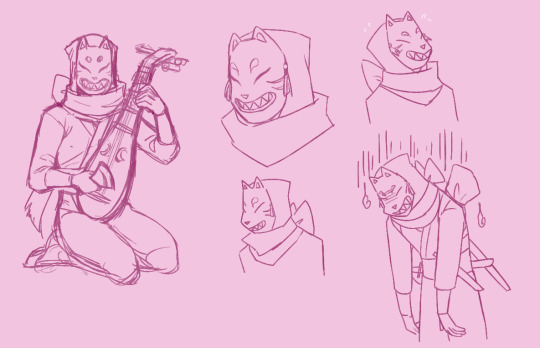


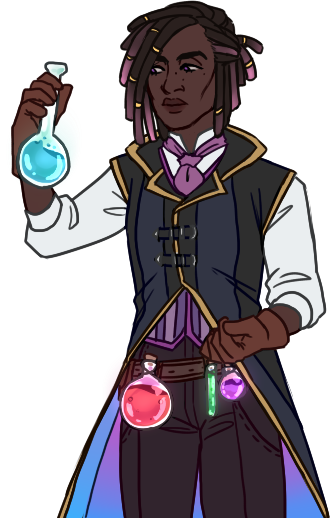
A pathfinder game I co-GM’d, I played an Astomoi Ninja named Shizuka, and a NPC Alchemist named Neo.
0 notes
Text
Getting into Pathfinder nowadays and I've fallen in love with Astomoi, so I made my own 😳💕
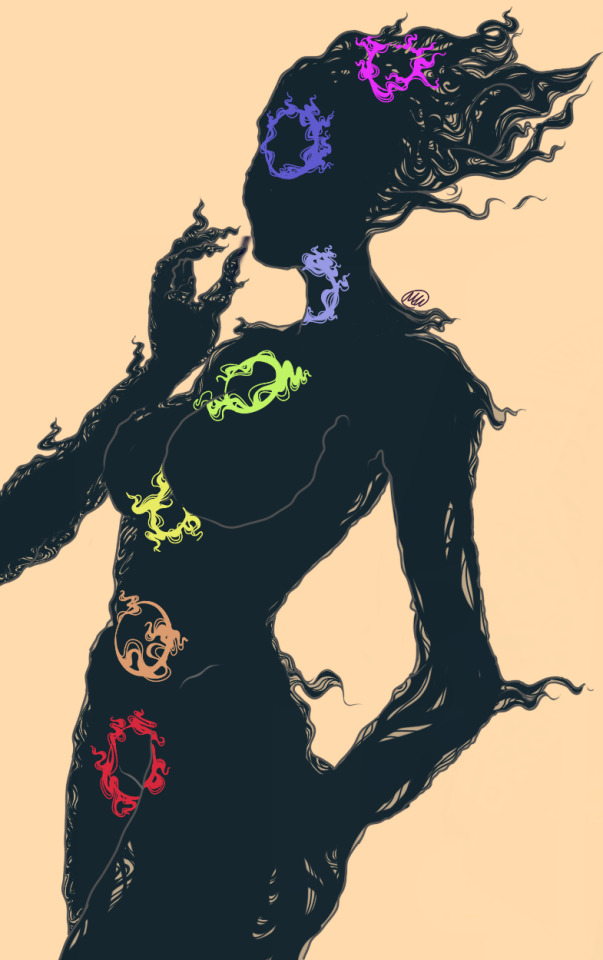
They need more love, it's a shame there isn't much info about them.
#pathfinder#astomoi#pathfinder 1e#fantasy oc#art#ocs#artwork#digital art#oc artwork#open commissions#cheap commissions#pathfinder oc#shadow oc#female shadow#astomoi pathfinder#astomoi art#cool ocs#digital oc art
29 notes
·
View notes
Photo

This is my new d&d character. Her name is Mika. She’s an astomoi (living shadow) and a shadowdancer. She has no mouth or eyes or physical form and she must dance.
Other people in the party:
A goblin vampire hunter who doesn’t know she’s a vampire
A dryad druid who really wants to make a friend and fall in love. Also she’s always surrounded by bees.
Girls club
Also all 3 of us wanted to play so we're all going to try to dm together
44 notes
·
View notes
Photo

some pathfinder losers, orio and ritz
#Character Design#pathfinder#summoner#original character#monster#astomoi#eidolon#Katairs poopy art#my art
9 notes
·
View notes
Photo

Here’s a couple of esoteric races from Panspermia, via Pathfinder proper.
Munavri are probably related to humans, and are known for being sailors on massive underground seas, and for their strange psychic powers.
Astomoi are almost completely featureless, see and speak telepathically, and are not from any known location.
8 notes
·
View notes
Note
31 and 34
Answering 34 first for space, I don't really do accents all that much. If they come up at all, it tends to be briefly, as it's a lot of effort to keep up. That being said, I certainly do voices: my current favourite is literally just talking as deep as I could for Dr Bhanu, an NPC my party interacted with briefly, who was a hospital administrator and elephant person. They went absolutely nuts for this, and I'm still not entirely sure why.
I have two current parties I'm running for, so I'll try to keep this short.
Party 1: Classic Ni no Kuni-esque fantasy 5e
Amethyst Crabtree, Halfling Bard: just a real sweetheart, absolute peak hobbit, heart of the party
Saeunn, Drow Druid: regularly a goat, sad family backstory and tendency to paranoia, unparalleled tank
Dras, Half-Orc Fighter: serious dude but funny in a deadpan sort of way. Definitely the party common sense.
Veil of Shadows, Tabaxi Rogue/Cleric: 52nd in line to the throne of Ocelocatl, minor daddy issues, major shenanigans. At this point literally stealthiest man in the world, but absolutely no braincells.
Party 2: "Mythic Furry Fallout" where the PCs are aiming to become gods, Pathfinder 1e
Aecus, LN Astomoi Gunslinger/Ghost Rider Cavalier: You can't fault their enthusiasm, serious law-space and cowperson, complete with gun, hat, and dependency on beans to maintain mythic power. Very dry sense of humour.
Hikaru Duskfeather, NE Tengu Hexcrafter Greensting Magus: Raised by Oni, planning on being god of both Murder and Love. Total wife guy, surprisingly chill about being only 4 foot 6.
Athelstan, NG Syrinx Cleric: A magical and medical healer studying the psychology of adventurers. Loves travel scrabble and cracking out the textbooks. Has ranks in Profession (bureaucrat)
Ralla Ironhand, CG Gnoll Abyssal Bloodline Bloodrager: Master of the Arena (in time), pictured in the dictionary under the word "boisterous", maker of friends and smasher of enemies.
Bristlecone, CN Gathlain Kineticist (Fire and Earth): Tiny flying bundle of chaos and explosions, working on animating a cuddly owlbear fir size when not running raves. Almost certainly has "We like to party" by the Vengaboys playing ambiently in the background most of the time.
0 notes
Photo
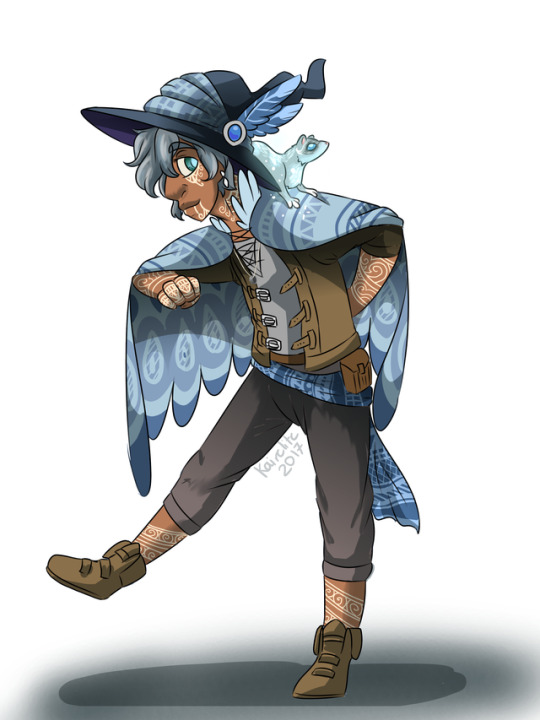



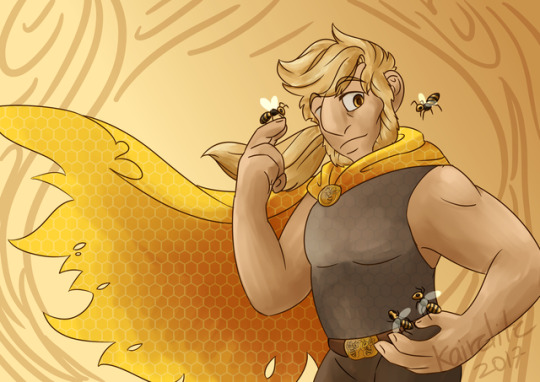
Just dumping a lot of art I’ve been doing for a not-yet-started pathfinder campaign on here.
Characters are:
Tanis, my sylph wizard and his celestial ferret, Sterling.
Lucy, a ratfolk rogue.
Kharles, an ifrit bard.
Orio, an astomoi summoner and their eidolon/weird dream snake, Ritz.
And Mel, a human cavalier with his various bee friends.
We have one more party member, but I’m not entirely sure who they are yet, so I'll probably put them on here too, eventually.
176 notes
·
View notes
Text
Roleplaying Races 14: Astomoi

(art by @xcrimsonalertx here on tumblr!)
We’re back with another special on playable ancestries, and this one’s a bit obscure.
Ahhh, yes, the Astomoi, one of the playable options that I mentioned before when talking about things that I wish First Edition had done (i.e., fleshing out some of the otherwise one-and-done playable ancestries that were introduced in a bestiary and never touched again).
But without further ado, I give you the faceless psychic enigmas, the astomoi!
Now, with their psychic abilities and featureless bodies, one might assume that the astomoi are a completely original creation by Paizo, or barring that, a reference to some surreal fantasy or sci-fi fiction, but this is actually not the case!
First mentioned by Megasthenes and later by Pliny the Elder in their naturalist bestiary works, the Astomi, or Astomoi as we would come to call them, were supposedly a species of human-like beings from the mouth of the Ganges River that were notable for their hairy bodies and complete lack of mouth. These beings supposedly subsided on the air they inhaled and the smells of fragrant fruit and vegetables.
This sort of “human-like but having a strange anatomy” is common trope of bestiaries at the time, whether Megasthenes made them up entirely or heard about them from some traveller’s stories, and perfectly illustrates how the human imagination filled in the edges of the known world long before exploration, scientific observation and accurate recordings of events did.
The astomoi as they appear in Pathfinder look a bit different, but keep the key elements of being mouthless and the sensitivity of their sense of smell, as we shall soon see.
Our Astomoi are humanoid in shape and mostly hairless, their bodies absorbing light while also projecting colorful patterns on the surface of their skin, looking by all accounts like humanoid blots of darkness in which stars or shapes are sometimes seen. Astomoi lack not just mouths, but eyes, noses and ears, their craniums being truly featureless. Instead, their whole body is scent-focused sensory organ, while their natural psychic ability provides for their sight and hearing.
While they can absorb some nutrients through the air, their primary method of sustenance is to psychically pull the nutrients of foodstuff out and absorb it through their skin, rendering the food tasteless and of no nutritional value to others. However, their skin is also their greatest weakness, as the permeability of the skin, which facilitates their ability to absorb scents, makes them vulnerable to inhaled toxins and air-transmissible disease.
Sadly, the fact that this ancestry was created for a bestiary and hasn’t received a single bit of lore support means that our only clues as to their disposition and society are literal scraps. What we do know is that they are predisposed to asceticism, making it likely that their culture and way of life are contemplative, minimalist, and lacking in extravagance. Indeed, Astomoi rarely see the need to wear any clothing at all save for protective materials for the weather, and even in their native temperate homelands, the most they ever where are a few small rags, and not even for modesty, not that their anatomy sports anything that other peoples would consider covering. (or maybe they do, if there is any sexual dimorphism with astomoi, we literally have only one piece of art to go off of. So feel free to fill in those gaps yourself.)
I also imagine with their sensitive olfactory organs, that scent must pay a strong role in their society, with faint perfumes being used for aesthetic purposes or even to convey meaning, though obviously they don’t wear anything too strong to avoid overwhelming themselves and others. Similarly, their food is likely prepared with aroma in mind, with spices and cooking being used to bring out mouth-watering scents. Imagine a group of astomoi gathered round a large, perfectly cooked and seasoned baked fruit buffet, just taking in the smell before absorbing the nutrients. Maybe even preparing an additional portion for mouth-bearing neighbors, which the astomoi enjoy with their senses even though they do not partake.
Astomoi are observant and insightful, capable of making sense of the world and their own thoughts, however, their bodies are somewhat delicate.
Without a mouth, astomoi must use their telepathy to communicate with other beings with language. Notably, they don’t seem to have their own tongue, perhaps learning languages mostly to facilitate communication with non-astomoi rather than for communication with each other.
Naturally, their whole body being an olfactory organ gives them a keen sense of smell.
Meanwhile, they use telepathy to simulate darkvision within a moderate range, but are blind beyond that. However, that telepathy allows them to substitute thought components common to psychic spellcasting for the verbal counterparts found in most other magic traditions in a telepathic shout that the threads of magic respond to.
However, having such receptive and sensitive skin means that astomoi are quite vulnerable to inhaled poisons and disease.
That being said, having no mouth does mean you can’t exactly feed them something poisonous. They can, however, absorb the magical effects of potions and other magical ingestables in the same way they do food, so there is that.
With their high intelligence and wisdom, astomoi make excellent casters regardless of class, though of course they are middling when it comes to charisma casters, though not bad per se. That weakness to constitution does not do them any favors, so if you plan any sort of tanky close-range combatant, you should probably focused on having a high AC over being able to eat hits. With than in mind, their ascetic ways makes monk a tempting class, but you should probably focus on being a rapid damage dealer and debuffer rather than absorbing hits. Sneaky classes like rogue and such are also decent, though if you’re a trap-breaker, be a very good trap breaker, because that suceptability to inhaled toxins, while situational, could be a major problem. Honestly, the only thing I would recommend steering them away from is ranged builds, as their sense of sight is limited to 60 ft, ok for skirmishes in a dungeon, not so much for making a sniper in the open field.
Overall the astomoi is a clever idea for creating a serviceable playable ancestry out of an obscure folklore reference, but it is hampered by a lack of lore. However, that is just more imperative for you and your players to come up with lore for them that fits your world!
13 notes
·
View notes
Link
People say the Astomoi are unplayable? I think not! See why they're actually a pretty great race to pay! Like, subscribe, share and reblog! Also! We're streaming a Pathfinder game on Roll20 Thursday night @ 8:00 eastern time. Tune in to our channel then to watch and be a part of the fun!
0 notes
Photo

Formed from the bleeding essence of the Astral Plane, Euthymious (astomoi blood arcanist) has no memory of anything resembling a childhood as other humanoids would understand it.
0 notes
Text
dang it, i ended up listening to lillie’s theme and it got me thinking about the astomoi vigilante character i had thought of for pathfinder
the idea is that instead of their vigilante form being a costume, instead their social form is, to hide that they’re an astomoi (those are creatures basically made of living darkness) so they basically wear an outfit similar to lillie’s, except all skin is covered and the head has a veil around it, and their vigilante outfit is probably like, a much stealthier outfit but still white, with maybe some gold trimmings and a symbol of sarenrae on it
oh, and their name is Serena (i’m not sure if like, Lady Serena or whatever, they’re agender after all)
it’s just a concept b ut i’d really love to use this character in a long campaign
0 notes
Text
Aerial Assaulter (Fighter Archetype)

The High Ground. Regardless of the Star Wars memes, there is an advantage to attacking from above.
Fiction is full of figures that specialize in combat from the air (Final Fantasy’s Dragoons come to mind), whether they are merely dropping in from above or achieving true flight, and today’s subject does just that.
Associated originally with the city-state nations of the Shory, who lived in flying cities that were marvels of magical engineering for their time, today we are looking at an archetype representing those descended from the warrior traditions that evolved alongside the air mages that the flying cities were most famous for.
Even though the Shory are long gone, the tradition have survived in it’s displaced people and their descendants, allowing for warriors that specialize in leaping high and/or dive-bombing foes from above to be found anywhere, not to mention in completely separate settings.
Either way, the aerial assaulter style promises to grant offensive and defensive advantages to those who attack from the air.
Long before they have reliable access to flight magic, these warriors train to master the art of motion in the air, gliding with stability, and squeezing the most power out of flight magic that affects them as possible.
With a bounding leap, these warriors prefer to strike from above whenever possible. Naturally, they prefer to do so from actual high ground, but when at ground level, sometimes the only way to get the high ground is to jump, or even parkour one’s way up a taller enemy, to get that extra advantage. Indeed, they are so adept at gaining that high ground advantage and utilizing it that they become all the more accurate by leaps and bounds when doing so, no pun intended.
Whether it be an advantage of their species or a blessing of magic, aerial assaulters all eventually seek out methods of true flight, and learn the art of the aerial dodge, shifting aside to help better avoid attacks.
The truest master of the high ground can drive their full weight behind their weapon, making their critical blows all the more lethal. What’s more, they turn aside attempts to befuddle them from below with ease.
Looking to play an acrobatic fighter that enjoys striking above? This archetype might be for you. Unless you’re playing a race that gets flight, you’ll be limited to acrobatics until around level five, but once you get an ally caster that can regularly enhance you with the power of flight, or better yet, magical equipment that grants it, you’ll really be soaring. Just be wary of flying foes that are more skilled in the air than you, and definitely pick up a method to protect against fall damage, just in case.
A high-flying lifestyle like this almost certainly reflects a daredevil mentality, though they could just as easily be cool-headed, well disciplined masters, the sort that your average hothead anime protagonist would have a rivalry with, but there is plenty of room for variation beyond that. All share a love for the air though.
With it’s ancient trees untouched by civilization, Muktilva Rainforest has it’s fair share of arboreal ambushers, including the powerful jungle giants, many warriors of which train to strike from above when flying or falling.
While normally ascetics, the mysterious faceless astomoi know better than most the dangers the world presents to their frail bodies, so when danger comes calling, many of their people have learned to strike first from above, where most other species never think to look.
Centuries ago, when the flying city of Laru crashed in the savannah, it was the gnolls that dwell there that came to the aid of the refugees and survivors. To this day, the gnolls share a special kinship with the “sky clan”, and often train under them in the art of “Eagle-Hunt” style, diving and flying down upon foes.
#pathfinder#archetype#fighter#aerial assaulter#giant#jungle giant#astomoi#gnoll#Blood of the Ancients
14 notes
·
View notes
Text
Vessel of the Failed (Medium Archetype)

They say dreams and passion are what fuel the world’s motion. We see all sorts of great success stories, of those who rose to the challenge. However, for every great success, there are a thousand tales of failure.
However, that does not mean that the effort and desire of those who fell by the wayside went away, or that it meant nothing, and today’s archetype seeks to channel that desire in a very literal way.
In the Golarion setting, the mediums known as Vessels of the Failed are associated with the Shrine of the Failed in the city of Absalom. This shrine is dedicated to those who lost their lives attempting the Test of the Starstone, a legendary trial in which one either becomes a god, or dies before they ever reach the legendary stone.
While these countless hopefuls did not manage to achieve their dream, the echoes of their desire remain, and some mediums channel their spirits to gain a measure of greatness, albeit a volatile one, mirroring the risk and reward that the deceased measured themselves against.
Of course, outside of the core setting, one might see these mystics similarly inspired by others who chased incredible, foolish dreams and came up short.
Perhaps they seek to help such spirits fulfill even a small measure of what they set out to do, or maybe they merely empathize with them and use their power to achieve their own goals. Either way, they skirt the edge of disaster much like their bonded spirits, to great effect.
The most iconic ability of the vessels is their ability to hold onto themselves even when their bonded spirit has too much influence over them, retaining control over themselves at the cost of a sense, though they can choose not to resist, as each time they push their limits, they lose some of their effectiveness.
While they can use their spirit surge as normal to get a little more power and guidance from their spirit, they can also tap into even greater surges at the cost of greater influence. However, there is a small chance that these surges fail entirely, though the influence remains the same.
Normally when a medium does something the spirit hates, the spirit punishes them with greater influence and penalties. These mediums understand that compromise is necessary, and can cede a little more control to reduce the weakness afflicting them.
The more powerful mystics can draw upon the nature of their spirit when skirting the edge of control as mentioned above, gaining a brief mystical surge based on the nature of their spirit, namely powerful evocation magic for archmages, walls of slashing blades for champions, ultimate wards against magic for guardians, great healing or harming for hierophants, inspiring blessings for marshals, or sight beyond sight for trickster spirits. Each time they risk losing control, they gain a single use of such magic to use as they see fit before the bond ends.
Definitely for risk-takers, this archetype actually rewards you for skirting the edge of losing control of your character, granting bigger surges at greater cost, and bonus high-level spell-like abilities when they maintain control. This is definitely an archetype that rewards you for using spirit surge often. Just remember that when you do inevitably lose control, the spirit may not have the same goals as you, depending on GM fiat. I’d recommend building with at least a little bit in mind of negating some of the disadvantages of the first few control save fails, such as the blind-fight feat.
Just as these mediums channel a more volatile force, so too should the spirits they channel be more energetic than most. They might be highly driven, with clear desires and goals compared to other spirits associated with the class.
Though he hardly cares for the title, the so-called “Monk of Dreams” is an ascetic astomoi who is fascinated by the stars, not only for their astronomical wonder, but also in how they govern fate. As such, he has studied a technique where the ambitions of the deceased flow through him, seeking to understand how fate and desire intertwine.
Many a would-be hero has tried to slay beasts far beyond their capabilities, including the mightly leonine grogisnant, a truly legendary beast. Something of a cult has cropped up around the beast, revolving around the believe that echoes of the souls of failed slayers crowd around it, looking for an outlet in the form of those of daring spirit.
Karida the Mourner is something of a traveling priestess, though she follows no god. She does, however, paint herself as something of an usher of the dead. When she hears stories of adventurers or wanderers who never returned, she ventures to their last known location, seeking the truth of their fate, as well as guiding them to the great beyond if necessary. However, she always keeps a piece of these wayward souls with her, a little bit of their story and drive to achieve their goals.
15 notes
·
View notes